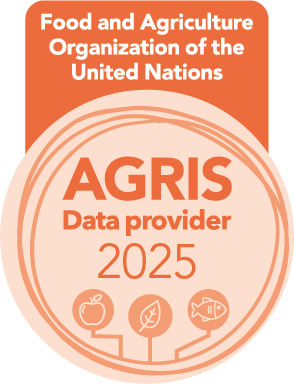

Address: Naberezhnaya Severnoy Dviny, 17, Arkhangelsk, 163002, Russian Federation, Northern (Arctic) Federal University named after M.V.Lomonosov, office 1425
Phone: +7 (8182) 21-61-18
E-mail: forest@narfu.ru
http://lesnoizhurnal.ru/en/
|
Active Carbons from Algae Residue of Alginate Production Containing Groundwood. P. 169–179
|
 |
Plakhina D.S., Bogdanovich N.I.
UDС
661.183.2
DOI:
10.37482/0536-1036-2025-5-169-179
Abstract
Active carbons obtained from various carbon-containing materials are highly porous carbon adsorbents with a developed internal surface. Particular attention should be paid to large-tonnage waste from the wood-chemical industry and agriculture, as well as wood processing. Such waste includes charcoal, lignin, sawdust and chips, pieces of bark, straw and husks from the processing of finished products, nut shells, fruit pits, and leaves of fruit trees. The porous substance obtained from wood raw materials has a high adsorption capacity, as well as a large specific surface area. In the course of the deep processing of brown algae at the Arkhangelsk Seaweed Factory, a large amount of organic waste is generated. The aim of the work has been to obtain active carbons from alginate waste consisting of 70 % wood flour. For this purpose, the method of thermochemical activation with sodium hydroxide as an activating agent has been used. The initial raw material has had a moisture content of 76 % and a diverse composition of mineral and organic substances. The research has been carried out as a planned experiment. The design chosen has been a 2nd-order central composite rotatable one for 3 factors. The independent variables have been the sodium hydroxide dosage, pyrolisis temperature and its duration. Based on the results of the study, the optimal values of these factors for obtaining active carbons from algal waste have been determined, as well as the optimal parameters affecting the sorption capacity and porous structure of active carbons. The work is of practical importance, since active carbon in powder and granular forms is actively used in various industries, including pharmaceutical, food, distillery, gas purification, wastewater treatment, biomedicine, and can also be used in agriculture as agricultural sorbents and soil improvement components. Based on the results of the research, it can be concluded that the use of organic waste as a raw material for the synthesis of active carbon by thermochemical activation with sodium hydroxide is of great interest.
Affiliation
1Arkhangelsk Seaweed Factory, prosp. Leningradskiy, 328, Arkhangelsk, 163030, Russian Federation; plahina.d.s@ab1918.ru
2Northern (Arctic) Federal University named after M.V. Lomonosov, Naberezhnaya Severnoy Dviny, 17, Arkhangelsk,163002, Russian Federation
Keywordsalginate production, alginate production secondary resource, wood flour, active carbons, pyrolysis, clarification capacity, hexane and water vapor sorption, planned experiment
For citation
Plakhina D.S., Bogdanovich N.I. Active Carbons from Algae Residue of Alginate Production Containing Groundwood. Lesnoy Zhurnal = Russian Forestry Journal, 2025, no. 5, pp. 169–179. (In Russ.). https://doi.org/10.37482/0536-1036-2025-5-169-179
References
- Antsiferova (Plakhina) D.S. Thermocatalytic Pyrolysis of Crop Processing Waste: Final Qualifying Work. Northern (Arctic) Federal University named after M.V. Lomonosov, 2018. 111 p. (In Russ.).
- Antsiferova (Plakhina) D.S., Smirnova A.I. Pyrolysis of Wastes of Agricultural Crops. Lomonosovskie nauchnye chteniya studentov, asprirantov i molodykh uchenykh – 2017: Collection of Articles. Arkhangelsk, Northern (Arctic) Federal University named after M.V. Lomonosov, 2017, pp. 115–118. (In Russ.).
- Bashirov I.I. Production of Molded Carbon Adsorbent from Oil Feedstock by Steam and Alkaline Activation Methods: Cand. Tech. Sci. Diss. Ufa, 2016. 121 p. (In Russ.).
- Beletskaya M.G., Bogdanovich N.I., Makarevich N.A. Carbon Adsorbent Technology. Physico-Chemical Analysis of Active Carbons. Arkhangelsk, Northern (Arctic) Federal University named after M.V. Lomonosov, 2015. 96 p. (In Russ.).
- Bogdanovich N.I., Kuznetsova L.N., Tretyakov S.I., Zhabin V.I. Experiment Planning in Examples and Calculations. Arkhangelsk, Northern (Arctic) Federal University named after M.V. Lomonosov, 2010. 127 p. (In Russ.).
- Evdokimova E.V. Production of Active Carbon Based on Aspen Wood: Cand. Tech. Sci. Diss. Yekaterinburg, 2020. 111 p. (In Russ.).
- Keltsev N.V. Fundamentals of Adsorption Technology. Moscow, Khimiya Publ., 1984. 592 p. (In Russ.).
- Koganovskij A.M., Klimenko N.A., Levchenko T.M., Marutovskij R.M., Roda I.G. Wastewater Treatment and Use in Industrial Water Supply. Moscow, Khimiya Publ., 1983. 288 p. (In Russ.).
- Feed Additives from Seaweeds and Their Processed Products. Ed by A.V. Podkorytova. Moscow, Russian Federal Research Institute of Fisheries and Oceanography, 2017. 70 p. (In Russ.).
- Makarevich N.A. Gas-Liquid-Solid Interface Boundary. Arkhangelsk, Northern (Arctic) Federal University Publ., 2018. 411 p. (In Russ.).
- Manina T.S. Production and Research of Highly Porous Carbon Sorbents Based on Naturally Oxidized Coals of Kuzbass: Cand. Chem. Sci. Diss. Kemerovo, 2013. 132 p. (In Russ.).
- Mukhin V.M., Kurilkin A.A., Klushin V.N. The Application of Active Carbon Modified by Potassium Hydroxide in the Purification of Waste Water of Functional Entertainment. Sorbtsionnye i Khromatograficheskie Protsessy, 2013, vol. 13, iss. 2, pp. 188–191. (In Russ.).
- Mukhin V.M., Tarasov A.V., Klushin V.N. Active Carbons of Russia. Ed. by A.V. Tarasov. Moscow, Metallurgiya Publ., 2000. 352 p. (In Russ.).
- Romanenko (Khviyuzova) K.A., Bogdanovich N.I., Kanarskiy A.V. Obtaining of Activated Carbons by Pyrolysis of Hydrolytic Lignin. Lesnoy Zhurnal = Russian Forestry Journal, 2017, no. 4, pp. 162–171. (In Russ.).
- Slavyanskij A.K., Sharkov V.I., Liverovskij A.A. Chemical Technology of Wood. Goslesbumizdat Publ., 1962, pp. 16–18. (In Russ.).
- Enterosorption. Ed. by N.A. Belyakov. Leningrad, Centre of Sorption Technologies Publ., 1991. 336 p. (In Russ.).
- Bansal R.C., Goyal M. Activated Carbon Adsorption. USA, New York, CRC Press, 2005. 520 p. https://doi.org/10.1201/9781420028812
- Celis de J., Amadeo N.E., Cukierman A.L. In situ Modification of Activated Carbons Developed from a Native Invasive Wood on Removal of Trace Toxic Metals from Wastewater. Journal of Hazardous Materials, 2009, vol. 161, iss. 1, pp. 217–223. https://doi.org/10.1016/j.jhazmat.2008.03.075
- Hayashi J., Kazehaya A., Muroyama K., Watkinson A.P. Preparation of Activated Carbon from Lignin by Chemical Activation. Carbon, 2000, vol. 38, iss. 13, pp. 1873–1878. https://doi.org/10.1016/S0008-6223 (00)00027-0
- Nanda S., Dalai A.K., Berruti F., Kozinski J.A. Biochar as an Exceptional Bioresource for Energy, Agronomy, Carbon Sequestration, Activated Carbon and Specialty Materials. Waste and Biomass Valorization, 2016, vol. 7, pp. 201–235. https://doi.org/10.1007/s12649-015-9459-z
- Mustranta A. Novel Applications of Lipases. Espoo, University of Turku, VTT Technical Research Centre of Finland, 1995. 83 p.
- Ramanujan R.V., Purushotham S., Chia M.H. Processing and Characterization of Activated Carbon Coated Magnetic Particles for Biomedical Applications. Materials Science and Engineering: C, 2007, vol. 27, iss. 4, pp. 659–664. https://doi.org/10.1016/j.msec.2006.06.007
- Rivera-Utrilla J., Sanchez-Polo M., Gómez-Serrano V., Álvarez P.M., Alvim-Ferraz M.C.M., Dias J.M. Activated Carbon Modifications to Enhance its Water Treatment Applications. An Overview. Journal of Hazardous Materials, 2011, vol. 187, iss. 1–3, pp. 1–23. https://doi.org/10.1016/j.jhazmat.2011.01.033
|
Make a Submission


Lesnoy Zhurnal (Russian Forestry Journal) was awarded the "Seal of Recognition for Active Data Provider of the Year 2025"

|







